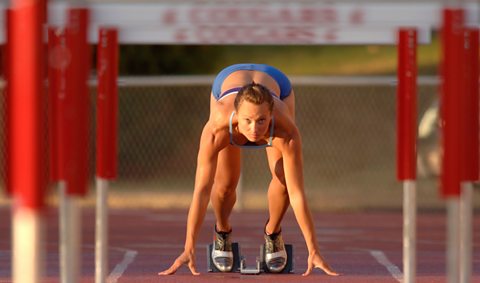Preparing for your performance
This standard is where you have to show you can prepare for your performance. You might prepare mentally, emotionally, socially or physically. You may even combine some of these together. You can show this preparation by doing, saying or writing.
Your preparation will be checked by your teacher and you will have to show or describe that you understand what you are doing and that you are doing it thoroughly. Your preparation should link into what you are going to be doing in the performance.
Examples

Mental preparation
You may decide to show preparation through mental rehearsal. For example:
- an athlete doing hurdles might mentally rehearse the rhythm of the steps between and over the hurdles
- A gymnast doing a floor routine might mentally rehearse the movements they are going to do and the changes of direction they will take on the floor
Both of these preparation techniques may take the form of small physical movements by the athlete, possibly whilst they are stretching off or just standing on the spot.
You may talk to your teacher at this point and tell them what you are doing. You may have even written down your preparation technique, allowing you to go over your plan in note form.
Emotional preparation
You may decide to show preparation through emotional rehearsal.
An example of this might be a high diver doing controlled breathing and shutting their eyes to focus on the dive they are about to do. They will then open their eyes once they are fully ready before they begin the footwork.
Social preparation
You may decide to show preparation socially by taking part in a team talk, which is a common approach in team sport. You would have to show you can listen fully throughout the talk and add your own part to the talk, should your role require it.
Physical preparation
You may decide to show preparation by doing a physical warm up.
An example of this may be a hockey player going through the correct phases of the warm up.
First they would raise the temperature of the body by completing some mid intensity running and movements.
Once their muscles are warm, they would then complete a range of stretches, using dynamic (moving) and static (still) techniques. The player would make sure the stretches were suitable to the sport and demands on the body.
The hockey player would then complete some higher intensity running and movements which may also include the stick and ball - allowing them to simultaneously practice some of the basic skills of the game.